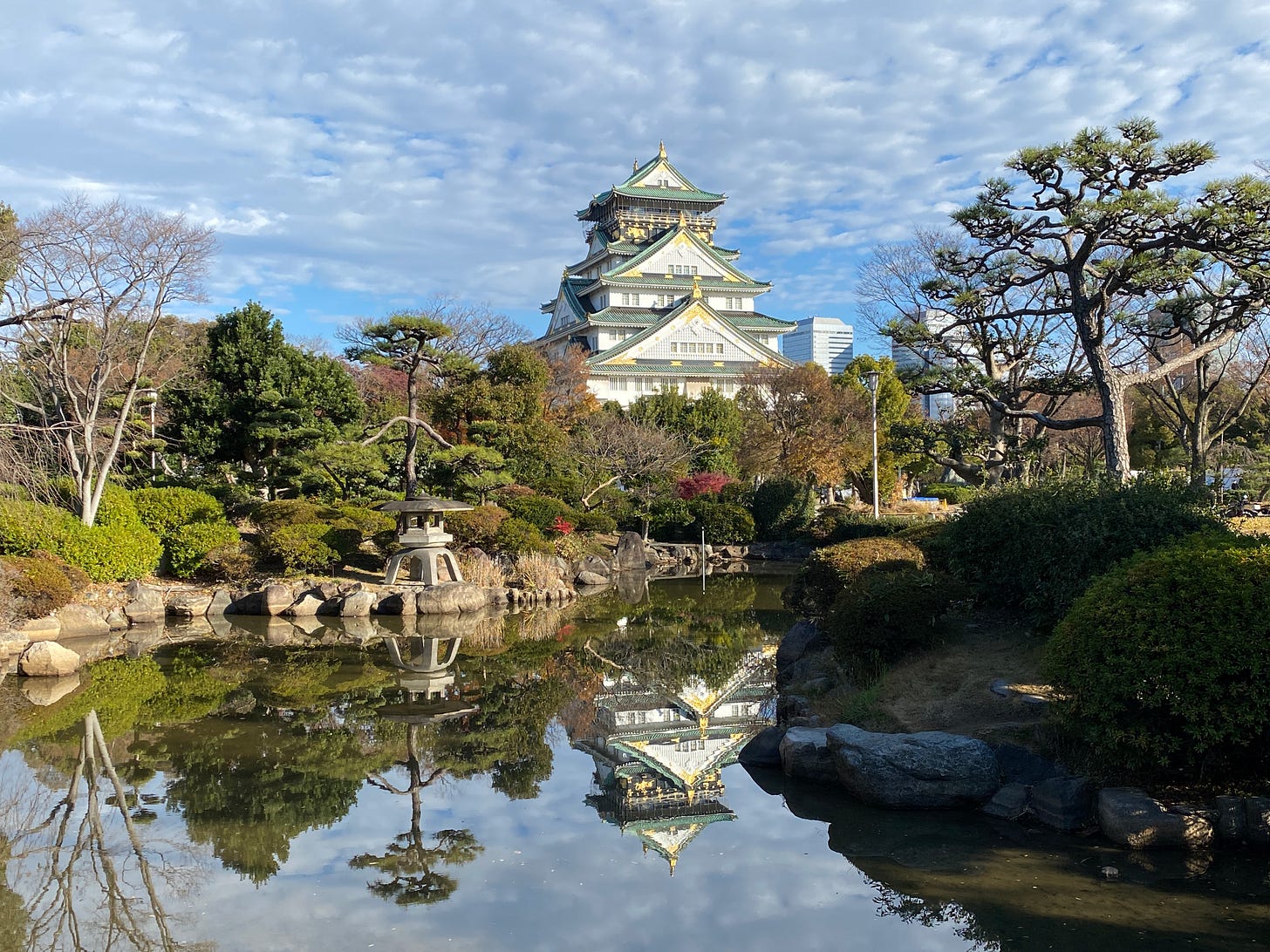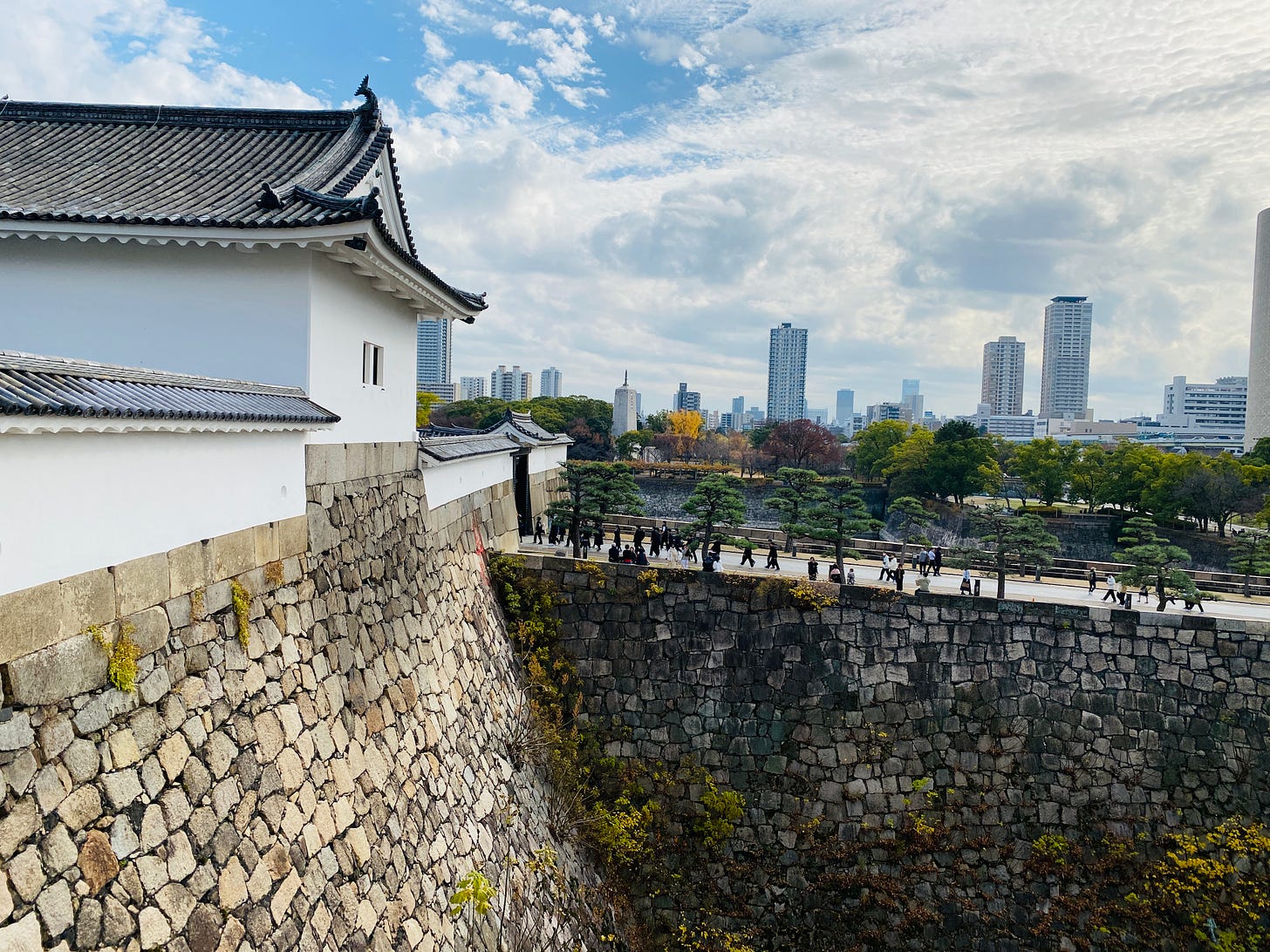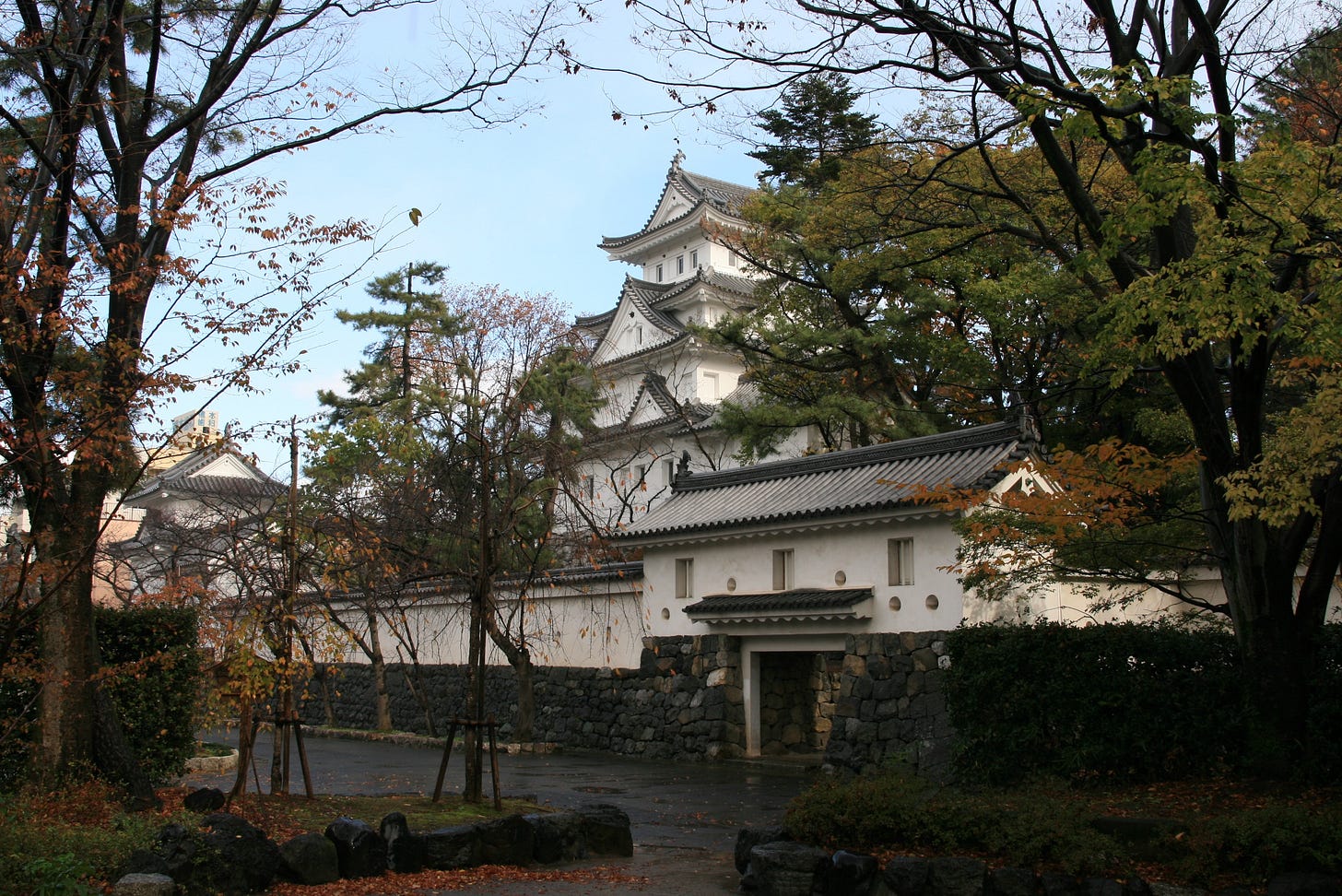Throughout history and throughout Japan some 40 to 50,000 castles were constructed. Not all were as grand as say Himeji, Nagoya or Osaka Castles, and the majority were simple yamajiro, mountain castles.
So what happened to all of those castles? Many were destroyed in battle, or were simply abandoned and demolished when they were superceeded or the samurai no longer had any need for them. After Hideyoshi gained control of the nation, he decreed that only the daimyo under his direct command could maintain castles. This meant many of the smaller warlords were forced to abandon their castles under threat of personal destruction. In 1598, Hideyoshi’s National Land Survey showed there were 204 active domains, and that most daimyo had one major castle, as well as a few smaller regional castles to protect his fief. In the early 1600’s the Tokugawa made a similar law, the Ikkoku Ichijo Rei, demanding that there was to be only one castle per domain, and so many more smaller castles were abandoned and destroyed. Castles were further destroyed over the years by fire from lightening or accident, and by earthquake or typhoon. Hideyoshi had made it strict law that castles, their structures and defences were not to be built, nor repaired without permission, a law that the Tokugawa also enforced, meaning that very few were maintained.

Many more were dismantled and abandoned at the end of the fuedal era, in the early Meiji period, when Japan — supposedly in an effort to shake off it’s feudal society image and quickly modernize — destroyed many more castles. The truth is that the new Meiji Imperial Government was too finacially strapped to be able to maintain these great architectural facilities, and so they were sold off or destroyed. Of the few tenshu tower keeps that remained, many more were destroyed during WW2, and the last to have succumbed to fire was Matsumae Castle in Hokkaido, which was destroyed in 1949. This left only 12 castles with the tenshu in original condition. Of those 12, only five are listed as National Treasures. Another 20 castles with significant remaining buildings, such as Kyoto’s Nijo-Jo, also survive.
It must be noted here that the tenshu is not the castle! A castle is not a structure but the entire fortified area. Although Nobunaga and Hideyoshi lived in the tenshu of castles such as Azuchi and Osaka, the majority were not living quarters, but better considered symbols of authority. During the peaceful Edo period, the lords of a castle would not enter their tenshu, as that was seen as inviting bad luck. The lord would only be expected to enter the tenshu as the last ditch effort during atack, and such a move would usually mean they were about to die. Instead, they would live and work from the main Honmaru or Ni-no-Maru Goten palaces or similar. The tenshu is best described as a show of strength and authority, a deterrent for war. It was expected that a large and impressive castle tower could only be built by someone of great wealth and power, enough to deter any potential enemy from attacking.
To bring down a samurai castle, a ratio of at least three attackers to every one defender is required. Even then, it is not a simple proceedure. According to the Guinness Book of Records, The longest castle siege in history was that of the Ishiyama Hongan-ji Castle in Osaka. The heavily fortified monastary first came under attack from Oda Nobunaga in August 1570, with the defending Ikko-ikki warrior monks holding out until August 1580 — ten years later — when the complex was finally overcome and burned to the ground. The site was then reused by Toyotomi Hideyoshi for his Osaka Castle. This too came under siege in 1614, before a temporary peace was established, and again in 1615 when the Tokugawa completely destroyed the castle and the last of the Toyotomi. The site is now the Tokugawa built Osaka Castle.

Battering rams are often depicted in movies and TV as being used to smash down the castle gates. This may have been the case in European warfare, but there are no documented cases of Japanese castles ever having been breeched or brought down through the use of such devices. That is pure fiction. For starters, samurai castles were designed so that there was not a direct access into a castle. On top of that any samurai carrying a battering ram and approaching the heavily defended castle gates would be the initial target of the defenders within.
Likewise, many novels, TV shows and movies depict invading hoards of samurai scaling the stone walls to enter and capture a castle. This is highly unlikely to have been an effective method. For starters, it would be increasingly difficult to climb the stone walls while wearing heavy, cumbersome and restrictive armour. Ones’ swords would also hinder progress, and as both hands would be required to climb, weapons such as swords, spears and guns could not be carried, and if slung on an attackers back, these weapons could not be easily called into play when required on infiltrating the castle. Another major point is that atop the stone walls were yagura turrets and high walls. This means there would be nothing more to grip having scaled the stonework, and nowhere to enter easily even if they did.

So how can you bring down a samurai castle? Castles were brought down via force, or by long term siege leading to starvation and thirst, also through treachery, or even through diplomatic, peaceful terms.
For example, in 1575, Takeda Katsuyori and his 15-20,000 troops attacked Nagashino Castle with a garrison of just 500. The castle managed to hold out over two weeks until reinforcements from Oda Nobunaga and Tokugawa Ieyasu arrived, leading to the Battle of Nagashino Shitaragahara. An ashigaru who had run to fetch reinforcements and was captured on his return, was used in an attempt to have the men inside capitulate, but his bravery in refusing the Takeda led to his quick demise after yelling to his comrades inside to hold on, help was on the way!

In the case of Washizu and Narumi castles falling to the invading Imagawa forces prior to the 1560 Battle of Okehazama, it was sheer numbers of attackers, versus the much smaller size of the fortress-like castle and number of defenders that caused their quick downfall. Same too with Yamanaka Castle near Mishima in Shizuoka Prefecture, built by the warlord Hojo Ujiyasu circa 1560 to guard the western approaches to Odawara Castle, the Hojo clan's primary base. During the 1590 Battle of Odawara, Toyotomi Hidetsugu bulldozed his way through Yamanaka Castle with a force of 70,000 against Hojo Ujikatsu’s 4,000 troops. Despite numerically superior forces the Toyotomi forces suffered heavy losses. Yamanaka Castle fell in half a days fierce fighting and most of its defenders were killed.
The siege of Shika Castle, (Saku City, Nagano Prefecture), spanning the years 1546 to 1547, was one of many battles fought in Takeda Shingen’s bid to seize control of Shinano ProvinceHaving defeated Uesugi Norimasa at the Battle of Odaihara, Shingen made use of over 300 severed heads obtained in battle to intimidate Shika's garrison. He displayed the heads prominently outside the besieged castle. The Shika garrison held out for another four days until around midday on 23 September 1547, when a (possibly deliberate) fire broke out within the castle, causing panic and confusion, and damage to the defenses. Takeda Shingen seized the opportunity to mount a full on assault that evening, overrunning, and capturing Shika Castle.
The 1584 Siege of Kanie (Aichi Pref.) was one of many elements in Toyotomi Hideyoshi’s campaign to consolidate his control of Oda clan lands in Owari Province. This event actually consisted of two sieges. When Hideyoshi attacked Kanie Castle, it was held by Maeda Tanetoshi on behalf of the Oda. However, Hideyoshi had pardoned Maeda's cousin Takigawa Kazumasa for his support of Shibata Katsuie at the Battle of Shizugatake, and as a result was obligated to Hideyoshi. Takigawa convinced his cousin to switch sides, joining Hideyoshi and surrendering the castle.
The new allies then attempted to attack nearby Ono Castle, but were repulsed when the defenders threw flaming torches into the attackers' boats. Returning to Kanie Castle, Hideyoshi and the Maeda came under siege from forces loyal to alliance between the Oda and Tokugawa Ieyasu. They pushed through the castle's outer defences, and negotiated a surrender contingent to the besiegers being given Maeda's head. When Maeda Tanetoshi attempted to escape, he was killed by his cousin, Takigawa Kazumasu, who provided the head to the Oda commanders.
Although many castles were claimed to be impregnable, none were ever proven to be so. Gifu Castle was claimed to be infallible, however it fell a number of times, one of the most interesting being the time that Takenaka Hanbei took the castle with just himself and 16 samurai followers. Supposedly because of his effeminate ways, a samurai of Gifu Castle (then known as Inabayama Castle) once gravely insulted the strategist by urinating on him as he passed below one of the castles’ defensive turrets. His complaints to the lord of the castle, Saito Tatsuoki, to have the perpetrator punished went unheeded, and so some time later, Hanbei entered the castle on the pretext of visiting his sick brother, but used the entrance to make a faux attempt on the life of Saito Tatsuoki. The cowardly Tatsuoki was confused into thinking a huge army of attackers had entered the castle, and fled for his life, abandoning the castle and his men, thus Hanbei took the castle easily.
Oda Nobunaga asked Hanbei, for the castle, however Hanbei refused, instead, he returned it to the embarrassed Tatsuoki, who had lost a great deal of reputation and honour in the cowardly retreat. When Nobunaga attacked the castle some two years later in 1564, many of the troops under Tatsuoki remembered his cowardice and either fled themselves or defected to the Oda and the castle fell easily.
Gifu Castle also fell yet again just prior to the Battle Of Sekigahara in 1600 when Western allied Oda Hidenobu was attacked by the tandem forces of the Eastern forces’ Ikeda Terumasa and Fukushima Masanori. In this case, it was mainly through overwhelming force that brought the castle down in half a day. Just two months earlier, 40,000 Western allied troops attacked Fushimi Castle south of Kyoto, which was breached only when one of the 1,800 defenders burned a watchtower as his family had been captured by the enemy.
Also just prior to the Battle of Sekigahara, the Western army found themselves entrenched in Ogaki Castle, with the eastern forces surrounding them, but not quite laying siege. Tokugawa Ieyasu himself suggested at one point that the rivers be dammed, and the castle flooded. Instead, he devised a faster, simpler, less costly way of getting Ishida Mitsunari out of Ogaki. He sent word via spies that his plans were to about turn, head back through the small pass between the mountains known as Sekigahara, and having entered Omi (modern day Shiga Prefecture) attack Sawayama Castle, Ishida Mitsunari’s personal home fief. This was enough to rouse Ishida Mitsunari into action, and on the night of October 20th, 1600, and under the cover of darkness and heavy rain, his forces pulled out of Ogaki Castle, and this led to the Battle of Sekigahara.

Ao Castle in Toyama fell when Sassa Narimasa’s retainer was persuaded by the enemy to open the gates, just as Tokugawa Ieyasu’s Okazaki Castle almost fell for the same reason when one of the trusted yet corrupt staff made a deal with the Takeda to cause the downfall of Okazaki and the Tokugawa.
When force or treachery could not bring a castle down, there were other ways. Toyotomi Hideyoshi, on the advice of Kuroda Kanbei laid siege to Takamatsu Castle by flooding the plain on which it was built. Following heavy rains, the surrounding rivers were diverted, and the plain began to flood. Built on a small rise within the low-lying plain meant that the army inside Takamatsu were soon cut off. Nobunaga was killed in the Honno-ji Incident just as food supplies and moral lessened, on Hideyoshi’s urging, the castellan capitulated, offering his life in return for the garrison within.
From the above few examples we can see that samurai castles were brought down via force, by siege, through trickery and treachery, or even through diplomatic terms. Trickery and treachery however seem to have played the largest, most successful roles.
Each castle was uniquely designed and constructed. Each has a diferent story, and it’s often these stories that makes Japan’s castles even more fascinating.





